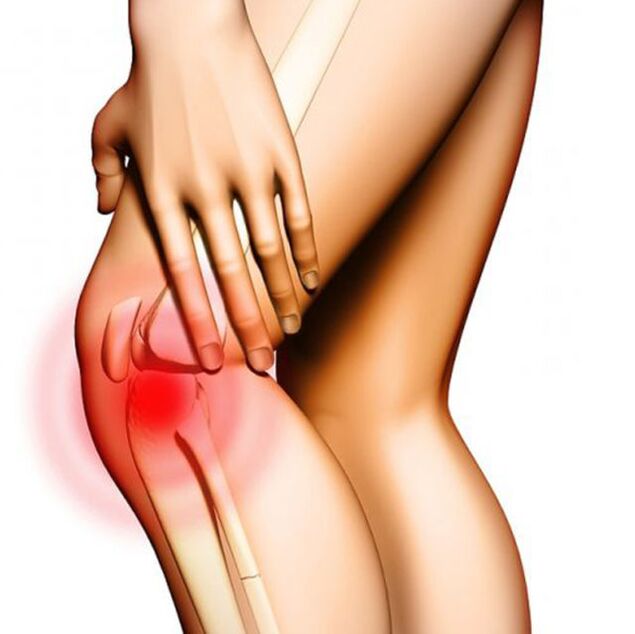
Gonarthrosis is a pathological process that causes deformation of the cartilage tissue of the knee joint. This process is associated with high stress, abrasion and salt deposits in the knees.
Myths about gonarthrosis
There are 3 most popular myths:
- "The diagnosis of gonarthrosis is an advantage for people with increased physical activity, and mostly people who do sedentary work do not suffer from it. " In fact, excessive physical exertion actually contributes to the deterioration of cartilage. During sedentary work, a static effect occurs on the knees, obstructing the blood supply. In addition, a sedentary lifestyle leads to weight gain.
- "Gonarthrosis of the knee joint does not heal, the disease progresses every day. "This disease is indeed a chronic disease, but with timely treatment, cartilage deterioration is prevented.
- "With osteoarthritis, you need to move as little as possible and sleep more. " A patient with such a pathology is prescribed special gymnastics that strengthen the garden apparatus. Only a few sports are really contraindicated.
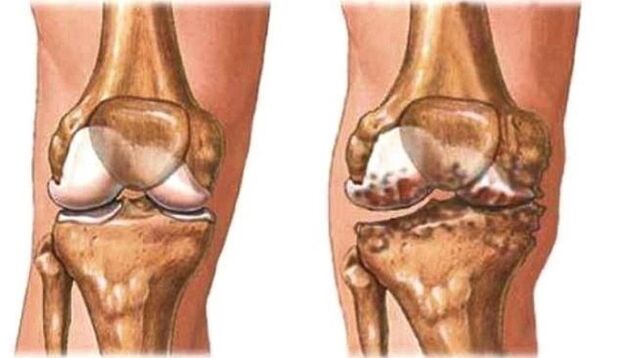
Gonarthrosis is the destruction of articular cartilage in the knee joint and adjacent bone surfaces.
Manifestations of osteoarthritis of the knee joint
Manifestations depend on the severity of the deformation. The more expressed, the clearer the symptoms.
Symptoms of gonarthrosis:
- long asymptomatic period;
- discomfort in the knee area;
- pain syndrome;
- reduced mobility;
- morning stiffness up to half an hour;
- the presence of a crisis during active movement;
- change in gait.
Bilateral gonarthrosis occurs when the knee joints of both extremities are involved in the process. This is one of the most severe forms. It is found in the elderly.
Right-sided gonarthrosis occurs with excessive static or dynamic physical force in the right extremity. More often in athletes.
Left-sided gonarthrosis occurs in overweight people and athletes with a load on the left leg.

Causes of gonarthrosis
Gonarthrosis is primary and secondary. It can occur in early childhood and adolescence, which is associated with joint defects, but can also occur due to the natural aging process in the elderly.
The second occurs due to injury or existing diseases. The main reasons:
- fractures, bruises, cuts;
- excess weight;
- the presence of an inflammatory process in the joint and the lack of adequate therapy;
- metabolic diseases accompanied by the deposition of salts in cartilage tissues;
- operations;
- Vitamin D deficiency;
- hormonal disorders;
- lift weights;
- some sports (running, hockey, football).
Who is at risk?
The risk group includes:
- professional athletes;
- obese people;
- patients who have undergone trauma or surgery;
- People over 45 years of age;
- patients with varicose veins;
- those with osteoarthritis in the family.
The risk group also includes women who wear high heels or flat thin shoes.
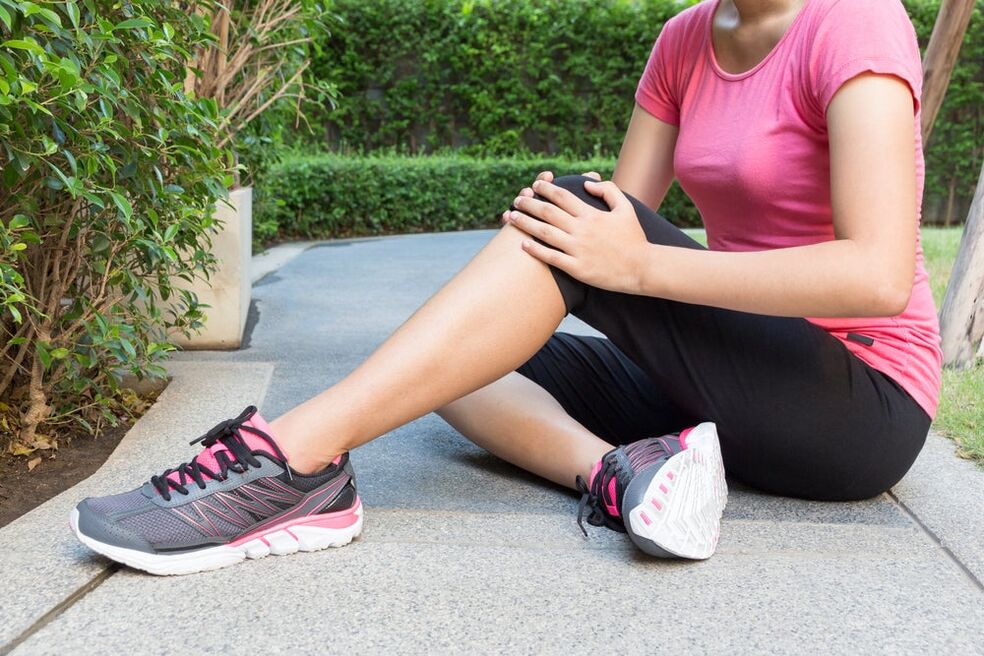
The exact causes of osteoarthritis of the knee are unknown.
Degree of gonarthrosis
Radiologically, this pathology is divided into 5 stages or degrees:
- Stage 0 - Absence of X-ray osteoarthritis;
- Stage 1 - appearance of a small osteophyte;
- Stage 2 - osteophyte has clear contours, joint space varies minimal;
- Stage 3 - narrowing of the joint space;
- Stage 4 - narrowing of the cavity, sclerosis of the subchondral bone.
Knee gonarthrosis 1 degree
The first degree is characterized by fatigue, limited mobility is expressed, and a crackling is heard. Pain occurs after waking up, sitting for a long time and physical exertion.
There is no deformation at this stage yet. The radiograph shows a narrowing of the joint space.
How is gonarthrosis treated?
A special group of drugs is used for treatment - chondroprotectors. Contains chondroitin & glucosamine to restore cartilage structure & increase elasticityNSAIDs are used to relieve pain.
Primary gonarthrosis is most bilateral. Even with the development of a unilateral form of the disease, after a while the second limb is also involved in the pathological process.
Early symptoms of osteoarthritis of the knee joints are mild and not characteristic
Methods of treatment
In addition to drug treatment in remission, the following methods are used:
- physiotherapy;
- massages;
- leech treatment;
- ultrasound exposure;
- radon and hydrogen sulfide baths;
- phonophoresis, electrophoresis;
- paraffin dressings;
- use of therapeutic mud.
These methods are used during remission, regardless of the stage of development of the disease.
Is mud good for knee gonarthrosis? One of the indications for mud treatment is diseases of the musculoskeletal system. The course of therapy is conducted twice a year. This includes 10 to 15 procedures. The method can be used at home, and the dirt is purchased at the pharmacy.
In the first degree, the patient is prescribed orthopedic shoes for the period of exacerbation to prevent the development of the deformation process. Women are advised to wear shoes with a heel of at least 1 cm and a heel of 5 cm. Normalize your diet - reduce the amount of salt and spicy foods. Jellied meat and jelly are included in the diet because they are natural chondroprotectors.
Another method is to correct weight. Reducing body weight to an optimal level for a given patient will reduce the load on the musculoskeletal system.
Grade 2 gonarthrosis
In the second degree, the pain intensifies, so movement is significantly limited. Walking long distances causes severe pain syndrome. The patient needs to rest to continue.
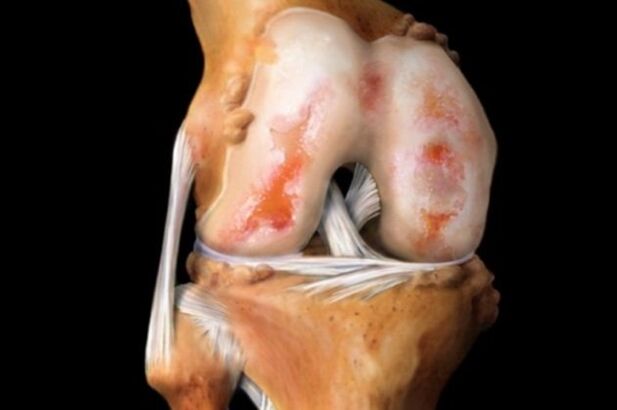
If treatment is not started (or ineffective), osteoarthritis of the knee joint progresses.
The crackling is loud, it looks lame. The affected joint is deformed. An inflammatory process occurs in the inner membrane of the joint.
On straight radiography, narrowing of the joint space, the appearance of thorns (osteophytes) in the bone.
Treatment
Drug treatment is based on the use of NSAIDs. They have anti-inflammatory and analgesic effects. In addition, chondroprotectors are prescribed.
After exacerbation, physiotherapy exercises and massage are prescribed.
Dietary recommendations:
- increase the amount of vegetables;
- include jelly and jelly meat in your diet;
- eat lean fish twice a week;
- prefer lean meat;
- eat bran bread.
It is recommended to include bananas, nuts, eggs, spinach, legumes, liver and cabbage in the diet.
In addition to orthopedic shoes, special knee pads are also prescribed.
Arthroscopic removal of deformed tissues from surgical interventions is used. This method has a short-term effect of 2-3 years.
Knee gonarthrosis, grade 3 symptoms and treatment
The most severe degree. Pain syndrome occurs during movement and at rest. Mobility in the knee is as limited as possible and sometimes impossible. Deformation is pronounced. There is practically no joint space on the radiograph.
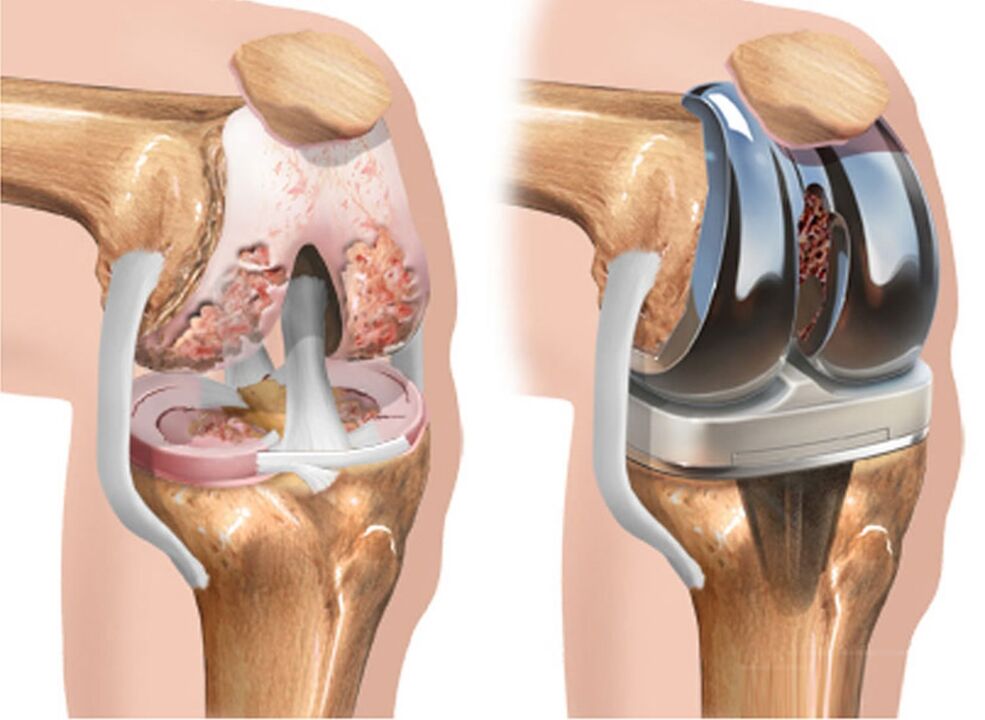
In the final stages, the progressive destruction of cartilage and bones leads to the development of ugly deformities of the knee, which increase in size.
Treatment
At this stage, in addition to NSAIDs, the patient is prescribed hormonal drugs. They are injected intravenously or into a joint. Severe pain syndrome is relieved by painkillers.
In stage 3, the operation is already indicated - endoprosthesis. Individual bone elements or whole joints are replaced. Contraindications: osteoporosis.
Complications of arthroplasty:
- marginal skin necrosis;
- prosthesis rejection;
- Neurological diseases (paresis, thrombosis).
In addition to endoprosthesis, there is also arthrodesis - removal of deformed tissue and joints. Rarely used.
Osteotomy - cutting the edges of the bones to redistribute the load.
Physiotherapy
Exercise for gonarthrosis of the knee joint can relieve pain, strengthen the muscular apparatus and stimulate blood flow to them.
- Exercise №1. The patient lies on his back, lifts his straight leg up and holds it for at least 30 seconds, then the second. Execution time should be extended to 2 minutes.
- Exercise number 2 "Bicycle". Imitate cycling with your feet lying on your back. Repeat 20-50 times.
- Exercise number 3. The patient lies on his stomach, alternately bends his legs, trying to reach the hips with the heel. Repeat 20-50 times.
- Exercise number 4. In the same way as the previous one, it is done only statically. That is, the patient corrects the joint in this position for 20-30 seconds.
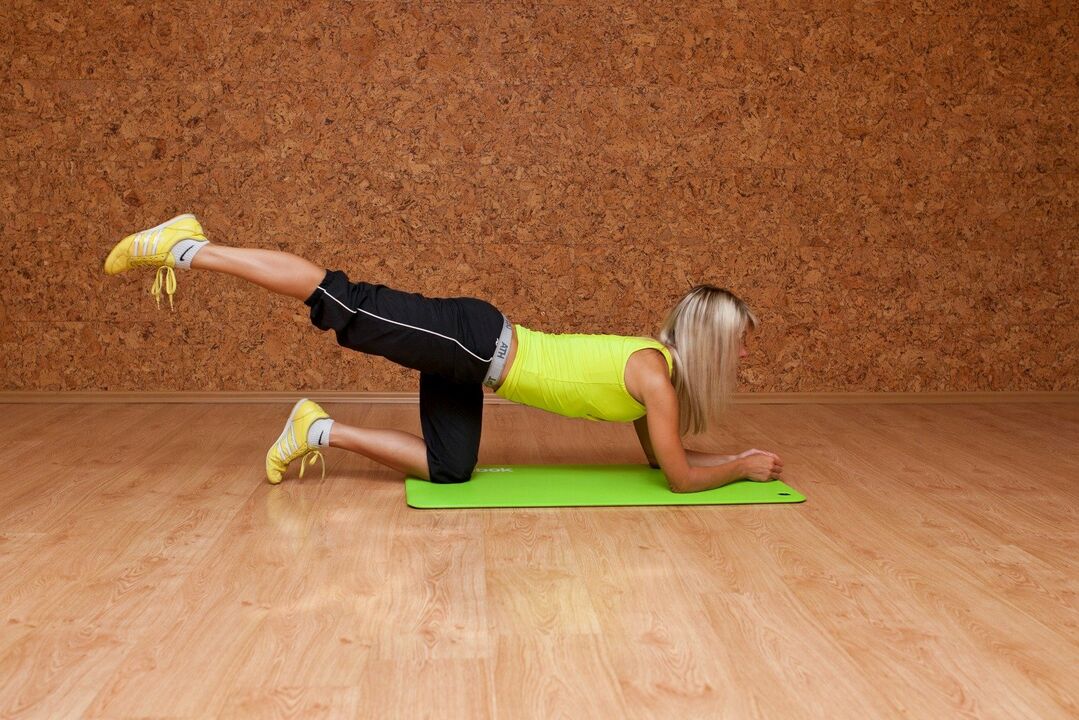
Patients are advised to lie down:
- Exercise №1. When standing, try to reach the ground without bending your knees. Hold your nose for 20 seconds, breathing through your mouth.
- Exercise number 2. Sit on the floor with your legs straight, try to wrap your arms around your legs, keeping your knees straight. Hold this position for up to 30 seconds. Take 2-3 approaches. If the elasticity is not enough to reach the legs, they try to hold the body by the lower leg and bring the body as close to the legs as possible.
- Exercise number 3. Same position as when performing the previous one. The patient holds his foot, tries to straighten it, and holds it as high as possible off the floor. If it is difficult to exercise, the foot is taken in the lower leg area. Hold the position for 10-30 seconds, then do it with your other foot.
Contraindications are the period of exacerbation and the presence of an acute inflammatory process. Patients are not allowed to run, walk or squat.
After physiotherapy exercises, it is useful to massage the muscles of the thigh, the lower leg of the affected joint. It should not affect the joint itself, it will increase inflammation.
Disease prevention
This disease is not inherited, so its development can be prevented. To do this, you need:
- to prevent injuries while playing sports;
- stretching and joint gymnastics, yoga;
- eat right;
- maintain a normal body weight;
- If you feel any discomfort in the knee area, consult a doctor;
- drink enough water;
- Get chondroprotectors prophylactically after 40 years;
- do not over-cool the joints;
- do not increase physical activity in the early stages of the process and during remission, do not run;
- wear orthopedic shoes;
- use knee pads when exercising.














































